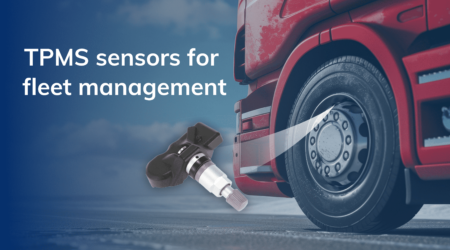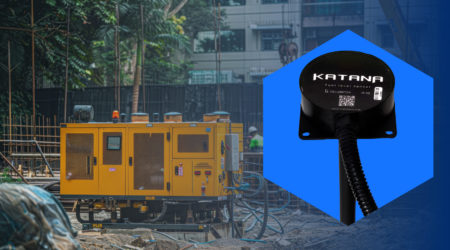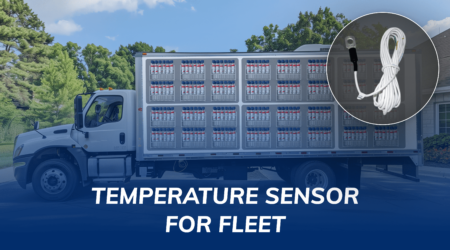How Do Bluetooth Fuel Sensors Work, and Why Does Your Fleet Need Them?

In the fast-paced world of logistics and transportation, managing a fleet efficiently is paramount. One of the revolutionary tools changing the game is the Bluetooth fuel sensor, a device that might seem small but packs a significant punch in optimizing fleet operations. But what exactly are these devices, and why does your fleet need them? This blog dives deep into the world of Bluetooth fuel sensors, unraveling how they work and showcasing their indispensable benefits for fleet management.
Understanding Bluetooth Fuel Sensors
Definition and How They Work
Bluetooth fuel sensors are innovative devices designed to monitor the fuel levels in a vehicle’s tank accurately and in real-time. These sensors leverage the principles of various technologies, including ultrasonic waves or capacitive measurement, to gauge fuel levels. The data collected is then transmitted wirelessly via Bluetooth to a central system or mobile device, enabling fleet managers to monitor fuel consumption without direct physical access to the vehicles.
- Basic Principles of Fuel Measurement: Depending on the type, these sensors either emit ultrasonic signals that bounce off the fuel surface or measure changes in capacitance caused by variations in fuel level. These measurements provide precise data on how much fuel is in the tank at any given moment.
- Bluetooth Technology in Sensors: The inclusion of Bluetooth technology allows for seamless wireless communication between the sensor and a receiving device. This setup eliminates the need for wired connections, making installation and maintenance simpler and less intrusive.
Types of Bluetooth Fuel Sensors
- Ultrasonic Sensors: These sensors work by emitting ultrasonic waves. The time it takes for the waves to return after hitting the fuel surface helps calculate the fuel level. They are known for their accuracy and reliability.
- Capacitive Sensors: Capacitive sensors measure the level of fuel by detecting changes in capacitance caused by the fuel’s dielectric properties. They are highly effective in various fuel types and conditions.
Advantages Over Traditional Methods
Bluetooth fuel sensors offer numerous advantages over traditional fuel monitoring methods. They provide more accurate and timely data, are easier to install and maintain, and reduce the risk of manual errors. Moreover, their wireless nature allows for more flexible installation options and minimizes disruptions to vehicle operations.
Benefits of Bluetooth Fuel Sensors for Fleet Management
Implementing Bluetooth fuel sensors in fleet vehicles offers a multitude of benefits, from enhancing operational efficiency to reducing costs. Here’s how they transform fleet management:
Real-time Fuel Monitoring
One of the most immediate benefits of Bluetooth fuel sensors is the ability to monitor fuel levels in real-time. Fleet managers no longer have to rely on manual checks or estimations. Instead, they can access up-to-date fuel data anytime, anywhere. This real-time monitoring allows for more informed decision-making regarding refueling schedules, route planning, and vehicle deployment.
Theft Detection and Prevention
Fuel theft within fleets can be a significant issue, leading to substantial financial losses over time. Bluetooth fuel sensors act as a deterrent for theft by providing immediate alerts when unexpected fuel level drops are detected. This capability enables fleet managers to quickly identify and investigate potential theft incidents, securing their assets and saving costs.
Improved Fuel Efficiency
By tracking fuel consumption patterns and identifying inefficiencies, fleet managers can implement measures to improve fuel economy. Bluetooth fuel sensors offer detailed insights into how fuel is being used, highlighting areas where improvements can be made. This could involve altering routes, adjusting vehicle loads, or training drivers on more fuel-efficient driving techniques.
Data Accuracy and Management
The precision of Bluetooth fuel sensors ensures that the data collected on fuel usage is highly accurate, eliminating the inaccuracies associated with manual recording. This accurate data is crucial for effective fleet management, enabling better forecasting, budgeting, and operational planning. Furthermore, integrating this data with fleet management software can provide comprehensive analytics, helping to optimize overall fleet performance.
Cost Savings
Ultimately, all these benefits lead to significant cost savings. Real-time monitoring and improved efficiency reduce fuel consumption, while theft prevention secures valuable resources. The accuracy of data supports better financial management and strategic planning, contributing to a healthier bottom line for the fleet.
Bluetooth fuel sensors provide a level of oversight and control that was previously unattainable, offering a clear competitive advantage in the logistics and transportation sector. They not only optimize fuel usage but also enhance the overall management and operation of the fleet.
Implementation and Integration
Adopting Bluetooth fuel sensors in your fleet involves a straightforward process, but it requires careful planning and execution to maximize the benefits. Here’s a step-by-step guide to implementing and integrating these sensors into your fleet management strategy.
Steps to Install Bluetooth Fuel Sensors
- Choose the Right Sensors: Select the sensor type that best suits your fleet’s needs, considering factors like fuel type, tank size, and vehicle model.
- Professional Installation: Although Bluetooth fuel sensors are designed for easy installation, it’s recommended to have them installed by professionals to ensure optimal performance.
- Vehicle Testing: After installation, conduct tests to verify the accuracy and reliability of the sensors in various operating conditions.
Integrating with Fleet Management Software
To fully leverage the power of Bluetooth fuel sensors, integrate their data with your fleet management software. This integration allows for:
- Real-time monitoring of fuel levels across the fleet.
- Automated alerts for potential theft or sudden drops in fuel levels.
- Detailed fuel consumption reports for analysis and decision-making.
Choosing a fuel management software that can seamlessly integrate with Bluetooth fuel sensors is crucial. Ensure the software can handle the data effectively and provide the analytical tools needed for comprehensive fleet management.
Training for Staff
Ensuring your team is well-versed in using Bluetooth fuel sensors and the associated software is vital for success. Training should cover:
- How to interpret sensor data and alerts.
- Best practices for responding to potential issues.
- Utilizing software analytics for fleet optimization.
Training empowers your team to make the most of the technology, leading to more efficient operations and better overall fleet performance.
Conclusion
Bluetooth fuel sensors are more than just gadgets; they are essential tools for modern fleet management. They offer a level of insight and control over fuel consumption that can significantly enhance operational efficiency, reduce costs, and prevent theft. Implementing and integrating these sensors into your fleet management system is a straightforward process that yields substantial benefits.
As the logistics and transportation sector continues to evolve, staying ahead of the curve with technologies like Bluetooth fuel sensors is crucial. Their real-world success stories underline the potential for improvement in any fleet, making them a worthwhile investment for the future of fleet management.
Embrace the future of fleet management with Bluetooth fuel sensors, and drive your fleet towards greater efficiency, security, and profitability.



